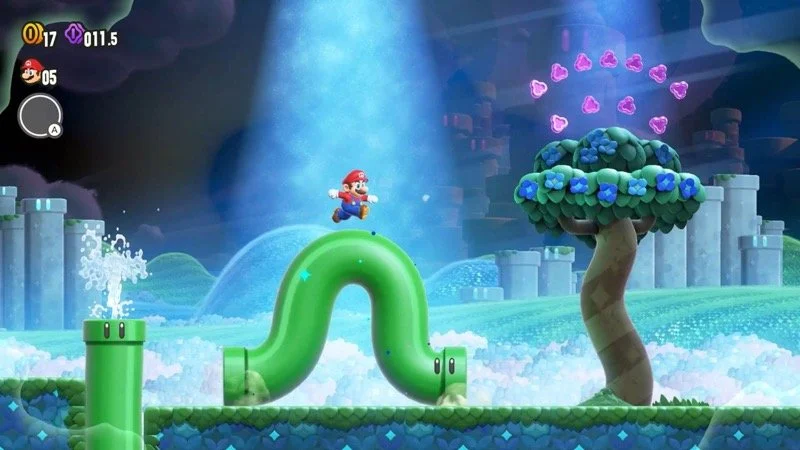With Game Sizes Increasing, Why Do Consoles Struggle to Hold Up?
Image Source: PlayStation
PC gamers used to be the audience that suffered most from increasing game sizes. However, this trend has spilled over into console gaming. Besides massive files, several other factors cause consoles to have trouble keeping up.
Console Storage Constraints
Though cellphones and PCs have gained popularity across U.S. households, about 58% of Gen Alpha and Gen Z played on consoles in 2024. Additionally, 55% of millennials indulge in this hobby. Unfortunately, some bestselling games are way too big.
For example, the 2K Sports games for NBA and WWE require upward of 100 GB in storage. If you have one terabyte of hard drive space, those two titles alone will consume about 20%. Gone are the days of having dozens of games installed and ready to play.
You might assume reverting to physical copies would solve the problem, but even these have changed. For example, Call of Duty: Modern Warfare II has a physical cartridge of approximately 72 MB. Unfortunately, the disc is only an authenticator that allows the console to download the digital game, which is 150 GB!
RELATED:
Image Source: Activision
Of course, there are valid reasons for this. For example, the rise of 4K resolution in media has created the expectation of smoother textures. Unfortunately, more graphics require more frames, which increases average file sizes. Additional content like music also boosts storage requirements.
Depending on console designs, it can be a struggle to boot up the game due to the sheer number of assets that must load first. Developers are tackling these obstacles with less conventional changes.
Innovations With Consoles
Solutions to these console struggles are a must-have, considering the rate at which game sizes increase. For example, 2021’s Star Wars Jedi: Fallen Order required about 50 GB of storage. Meanwhile, the sequel Star Wars Jedi: Survivor needed triple the space only two years later.
You can avoid these issues by purchasing numerous backup hard drives. You’ll save files and manually swap them out depending on the game you want to play on any given day. This solution is less convenient, but it gets the job done.
Console designers always seek ways to make their hardware more adept at processing games, as shown first with better-performing SSDs. These inclusions can focus on lowering loading times and boosting hardware performance, enhancing the gameplay experience. Software updates also help address any lingering performance issues.
Image Source: PlayStation
Integrating cloud storage could be the light at the end of the tunnel. By 2027, about 70% of enterprises may use industry cloud platforms to accelerate their business initiatives. This trend could be a literal game-changer for the console industry, as it allows users to store data on digital infrastructure.
The increased usage of cloud infrastructure for data storage can also make console developers feel less pressure to increase hard drive space. In this scenario, priorities might shift toward finding a reliable third-party provider to manage these servers, leaving more room to work on the firmware and software in the long run.
The Gaming Experience Changed
Increasing game sizes are only the beginning of a reprioritization within the gaming world. Hopefully, consoles will still keep up with the changes. One of the more exciting developments is the possibility of a longer console life span. The PlayStation 3 and Xbox 360 lasted about 11 years, while others, like the Wii U and 3DS, lasted five and nine years, respectively.
It’s natural for gamers to upgrade their hardware as time passes, especially when games’ storage requirements become more demanding. However, it would be ideal to integrate these updates into the consoles people already own instead of forcing them to buy new ones.
Another goal is to introduce more titles that are less taxing on gaming systems. The Nintendo Switch does an excellent job of having bite-sized games to preserve its portability perks. Super Mario Brothers Wonder was around 4.5 GB when it came out in 2023, and other titles made for this platform fall within the same range.
Image Source: Nintendo
Many titles are available on multiple consoles, even as this trend of higher storage requirements persists. Still, it’s crucial to maintain the quality and thrill these experiences create in the long run.
Ultimately, the future of the console user experience is still bright. There’s plenty of anticipation for upcoming units like the PlayStation 6. The global console gaming market was already at $40.3 billion in 2023, and it will reach $47 billion in 2028 if it stays on the same trajectory.
The demand for games with fulfilling stories and stunning graphics remains high. Developers create the most immersive experiences possible, further inflating game sizes. Console companies must ensure their technology is up to par to keep gamers happy.
READ NEXT:

















